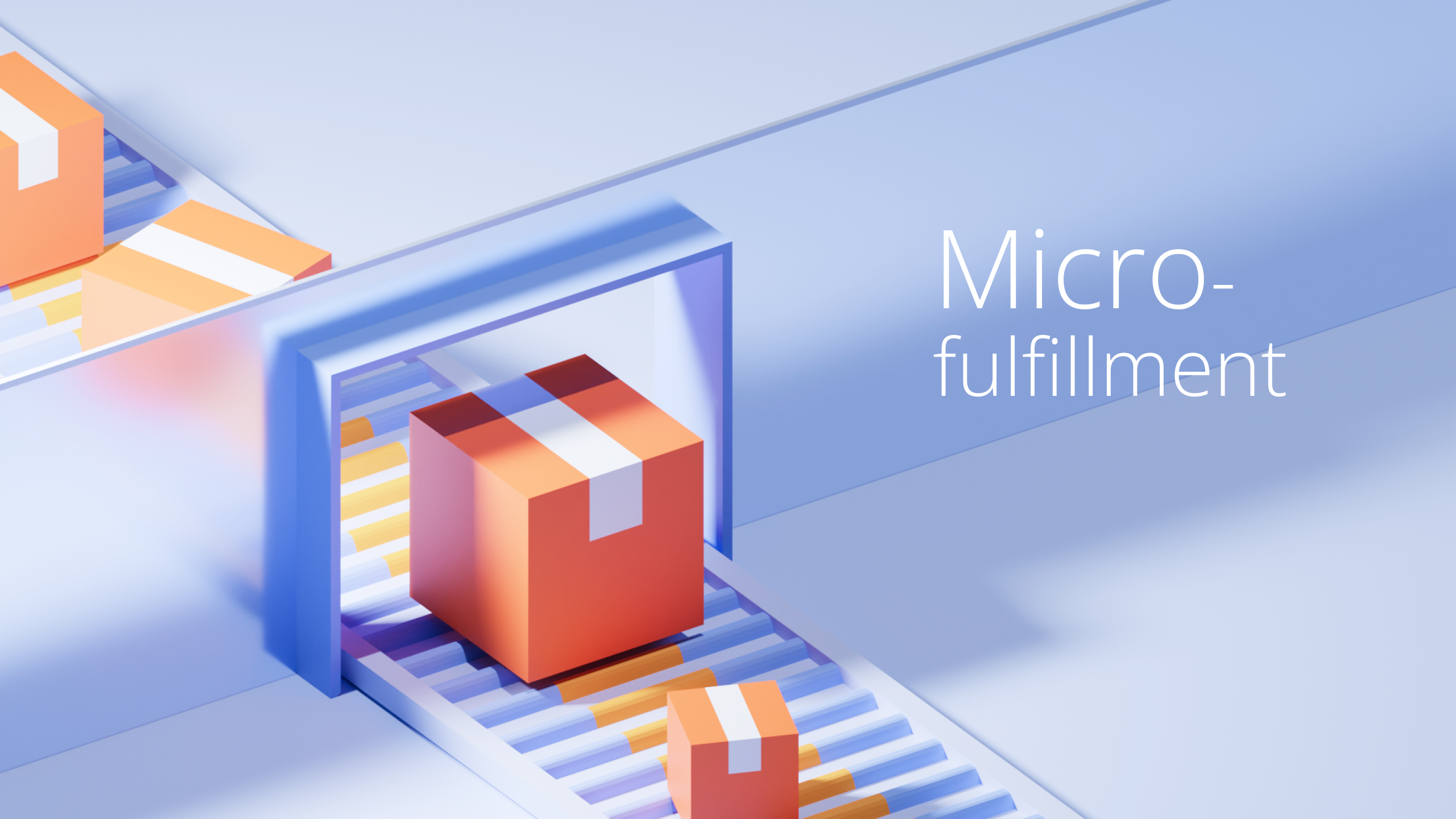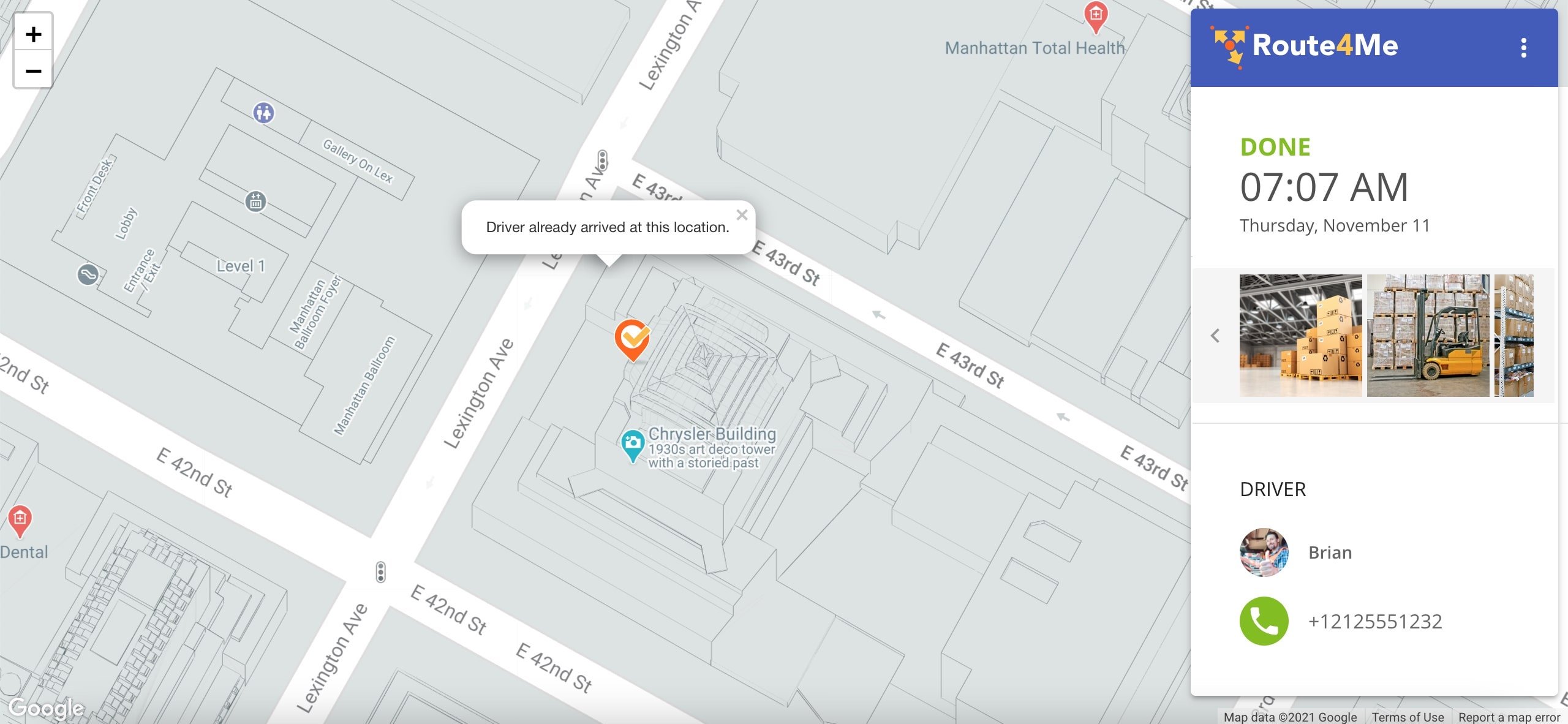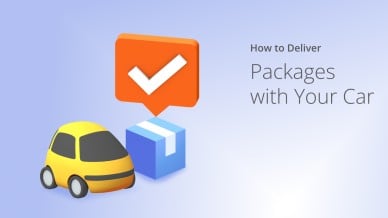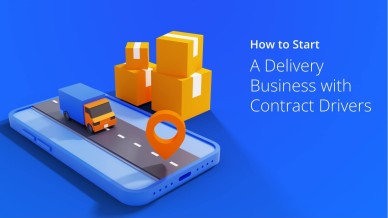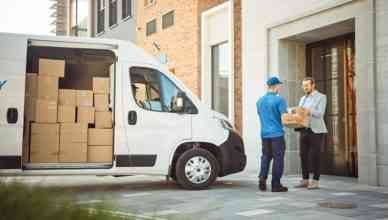Customer expectations are at an all-time high. Same-day delivery is no longer a novelty; it’s table stakes.
According to a report by Statista, 41% of global online shoppers ‘hope to receive’ their packages within 24 hours. And 24% of surveyed shoppers even prefer deliveries in less than two hours.
Faster, cheaper, greener – the consumer demands for flawless last-mile delivery seem never-ending.
Therefore, whether you manage a fleet of vans or a network of independent contractors, staying ahead of the curve is critically essential.
2024 promises exciting advancements in last-mile delivery. In this blog post, we’ll share the key trends, from AI-powered route optimization to hybrid fleet, that could help you optimize your last-mile operations and improve your bottom line.
Table of Contents
1. Hybrid Fleet Model
The hybrid model is emerging as a strategic approach to managing last-mile challenges. The strategy combines different resources for last-mile logistics, which can include:
- Vehicle types: A mix of traditional gasoline or diesel-powered vehicles, electric vehicles, or even drones for specific situations.
- Ownership models: Owning a core fleet of vehicles alongside utilizing third-party logistics providers (3PLs), independent contractors with their own vehicles, or crowdsourced drivers.
Below are several reasons why the hybrid fleet model is becoming popular.
- You can adapt to changing demands seamlessly. For example, during the holiday season, you can leverage additional resources from crowdsourced drivers or 3PLs.
- It enables you to optimize fuel costs by strategically deploying different vehicle types. For example, you can use electric vehicles to reduce cost per mile, while cargo bikes can excel in dense urban areas with high parking costs.
- The hybrid model enables you to integrate environmentally friendly options like cargo bikes and EVs, meet sustainability goals, and attract environmentally conscious customers.
However, managing a diverse fleet with different vehicle types, ownership models, and external partners isn’t easy.
Also, integrating data from various sources (e.g., 3PLs, in-house resources) to optimize routing and scheduling is crucial for success. You need a robust fleet management system and a clear communication protocol.
2. AI-powered Route Optimization
Embracing AI for route planning and scheduling is another latest trend in last-mile delivery. According to a report by Research Nester, the global AI-enabled last-mile delivery market will be more than $5 billion in the next ten years at a CAGR of 20%.
AI-driven route optimization software and route planner software like Route4Me uses machine learning algorithms to create the most efficient delivery routes by considering critical factors such as traffic congestion, weather conditions, delivery time windows, and roadblocks. It’s also a boon for time-sensitive deliveries like food.
Route4Me’s last mile optimization solution minimizes travel time, saves money on gas, and reduces vehicle maintenance and labor costs and other delivery-related expenses.
Another benefit of using an AI-driven highly rated route app is that it minimizes mistakes, which often happen if you plan routes using pen and paper. The software can evaluate massive volumes of data, identify patterns, and create better routes within a minute.
Also, AI-powered multi-stop route optimization software like Route4Me helps you modify routes easily. This enables you to respond to unanticipated situations like last-minute delivery requests, vehicle breakdowns, or road accidents.
Want To See For Yourself How Route4Me Can Help Make Last Mile Deliveries Efficiently?

3. Sustainable Delivery
The pressure is on for last-mile delivery companies to be efficient and eco-friendly.
Consumers are becoming increasingly conscious of their environmental impact and prefer hiring services from companies that prioritize sustainability. According to a Merchants Fleet Shipping survey, 56% of shoppers said they would buy more from a brand that uses green shipping methods.
Governments worldwide are also implementing strict regulations to curb emissions, forcing last-mile companies to adapt and adopt cleaner technologies to comply.
Furthermore, sustainable practices help save on costs. Electric vehicles, for example, require minimal maintenance compared to gasoline-powered vehicles. All these driving forces make sustainable delivery one of the major trends in the last-mile delivery landscape.
Here are several ways you can reduce your carbon footprint:
- Use the best last-mile delivery software to plan fuel-efficient routes and ensure your drivers make more stops per run while driving fewer miles.
- Use lower-carbon fuels, such as biofuel, instead of fossil fuels, or replace your old delivery vehicles with electric vehicles.
- Offer a green delivery option and encourage customers to opt for it.
- Implement eco-driving education programs for your drivers to reduce fuel consumption and greenhouse gas emissions.
- Offer a curbside pickup service to enable your customers to collect their orders from a convenient location rather than delivering packages to their homes.
4. Micro Warehousing
Micro warehouses are strategically placed in urban areas, closer to the end customer. This helps reduce travel time compared to traditional warehouses on the outskirts of cities. And less travel time means less fuel and maintenance costs. All these make micro-fulfillment one of the top last-mile delivery trends.
Micro warehouses are typically smaller and require fewer staff, reducing storage and employee costs and making inventory management easier. It helps make faster deliveries that improve customer satisfaction and retention.
Micro-fulfillment helps last-mile companies manage various delivery options, such as express deliveries or in-store pickup for online orders.
However, the success of micro warehousing largely depends on the location where you set it up. Choose densely populated areas with easy access to major roads for faster deliveries. This helps you quickly fulfill a high volume of orders within a small radius.
Also, because micro-fulfillment centers have limited space, automated picking systems, and conveyor belts should be considered to make picking and packing efficient.
5. Smart Technology for Tracking
Today’s customers seek transparency and convenience, while last-mile companies want efficiency and cost reduction. Smart tracking technology addresses both requirements, making it a major last-mile delivery trend.
Traditional tracking only shows a package at a sorting facility. Smart tracking uses GPS, cellular networks, and other methods to locate a package throughout its journey.
Customers can see where their package is and when it’s likely to arrive. This helps them plan their day accordingly and reduces customer frustration and failed deliveries.
Multi-Stop Route Planner App
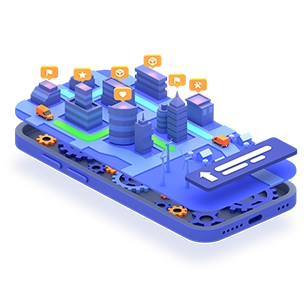
Plus, with smart tech for tracking, companies can monitor driver performance, optimize routes, and dynamically adjust routes to reduce delivery delays. Real-time tracking prevents theft and helps locate misplaced packages faster and more accurately.
You can use Route4Me’s route optimization solution to leverage its smart tracking technology.
For example, you can use Route4Me’s multiple stop route planner app to inform customers about their package status. It offers a customer alerting and notification feature to notify customers whenever their parcel is out for delivery, near their location, or has already been delivered.
Route4Me’s best route mapping software also offers a customer portal that enables end customers to track the progress of their package delivery on their own.
Plus, Route4Me’s multi-stop route planner allows you to set up geofences, which are virtual perimeters for real-world geographic areas. It enables you to automatically track vehicles and record when your drivers enter and leave each destination and customer address en route.
Route4Me has a built-in commercial GPS tracker that lets you monitor vehicle location on the road in real time. Therefore, if a driver deviates from the routes, engages in reckless driving, or faces an unexpected situation such as a vehicle breakdown or road mishap, you’ll know immediately and take the necessary actions. It also offers a speed alert to notify whenever a driver over speeds.
Frequently Asked Questions (FAQs) about Last-Mile Delivery Trends
What are the future trends in last-mile delivery?
What is last-mile delivery strategy?
Final Thoughts about Trends in the Last-Mile Delivery Industry
With hybrid fleets, AI-driven route optimization, sustainable practices, micro-fulfillment, and smart tracking, the future of last-mile delivery is shaping up to be faster, greener, and far more customer-centric.
By embracing these trends, last-mile delivery companies can streamline delivery operations, reduce costs, and create a delivery experience that keeps customers happy and returning for more.
Want To See For Yourself How Route4Me Can Help Make Last Mile Deliveries Efficiently?



